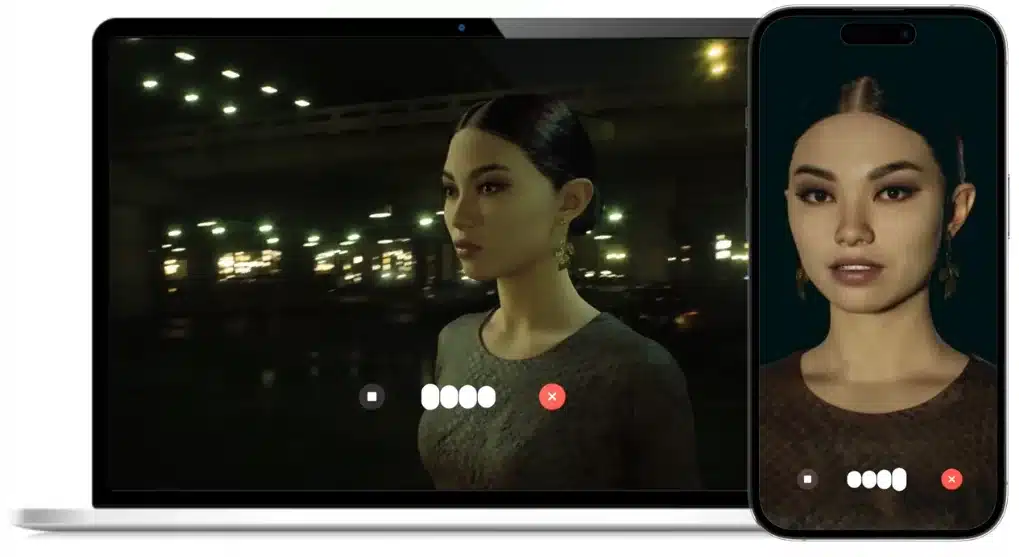AvatarOS Raises $7M to Build the Next Generation of AI Virtual Influencers-Here’s Why It Matters
If you thought the metaverse hype was fading, think again. The world of digital avatars is getting a major upgrade, and this time, it’s powered by AI that’s smarter, more lifelike, and-dare I say-way cooler than anything that’s come before. I’m Chad, and today I’m breaking down why AvatarOS just snagged a $7 million seed round from M13 and what it means for the future of virtual influencers, brands, and anyone who’s ever wanted to create a digital persona that actually stands out.

The Comeback of Avatars-Now With More AI
A few years back, everyone and their dog were jumping on the metaverse bandwagon, churning out digital avatars for everything from gaming to virtual meetings. But as the hype cooled, so did the innovation-until generative AI came along and changed the game. Now, spinning up a virtual identity isn’t just easy; it’s practically effortless. Companies like D-ID, Synthesia, and even Zoom have been dabbling in avatars, but most of what’s out there is, let’s be honest, pretty generic.
Enter AvatarOS, founded by Isaac Bratzel, the creative mind behind viral virtual influencers like Lil Miquela and Amelia 2.0. Bratzel saw a gap in the market: while it’s easy to make avatars, it’s hard to make them good-think avatars with real personality, unique movement, and staying power that goes beyond a single campaign or trend.

Meet the Founder: Isaac Bratzel’s Virtual Pedigree
Bratzel isn’t just another tech founder chasing the latest AI fad. His resume reads like a greatest hits of the avatar world:
- IPSoft: Designed Amelia 2.0, an AI-powered digital assistant.
- Brud: Created Lil Miquela, arguably the most famous virtual influencer on Instagram.
- Dapper Labs: Joined after Brud’s acquisition, further honing his expertise in digital identity.
After leaving Dapper Labs in 2022, Bratzel launched AvatarOS to tackle what he sees as the next frontier: high-quality, customizable avatars that don’t just look good-they move and act with the nuance of real humans.
The $7M Bet: Who’s Backing AvatarOS?
AvatarOS just closed a $7 million seed round led by M13, with participation from heavy hitters like Andreessen Horowitz Games Fund, HF0, Valia Ventures, and Mento VC. This isn’t just a pile of cash; it’s a vote of confidence from investors who know the digital identity space inside and out.
Latif Peracha from M13 called this an “exploratory round,” emphasizing that they’re betting on Bratzel’s track record and vision. Fun fact: Peracha even did part of his due diligence by chatting with an avatar of Bratzel himself. If that’s not on-brand, I don’t know what is.
What Makes AvatarOS Different?
Let’s get real: most avatar platforms today are all about quantity over quality. They churn out endless digital faces, but they all move and act the same. Bratzel’s vision for AvatarOS is the polar opposite.
“The main thing that is important to us is that humans move in a unique way. Pretty much every avatar solution can create something that might look like you but moves generically. Our view is that humans don’t move in the same way, and we want to recreate that.” – Isaac Bratzel
Here’s how AvatarOS is setting itself apart:
- Premium, Custom Avatars: Right now, AvatarOS is hand-crafting high-end avatars for select clients, focusing on 3D models that look-and crucially, move-like real people.
- Lifelike Motion: The company is building a machine learning-based “deformer” to capture the subtle, individual ways humans move. No more stiff, uncanny valley robots-these avatars are designed to be as expressive and unique as the people they represent.
- API Integration: Beta users can already access a simple API to integrate avatars into their own sites, powered by large language models (LLMs) for dynamic interactions, camera controls, and more.
- Long-Term Value: Bratzel wants avatars to be more than disposable content. Think of Lil Miquela-a virtual influencer who’s become a lasting brand, not just a one-off project.
The Business Model: Still in Beta, But With Big Ambitions
AvatarOS is still in its exploratory phase, figuring out exactly where the biggest opportunities lie. The team knows that just because you can make something cool with AI doesn’t mean people will actually want it. That’s why they’re onboarding beta users, testing different use cases, and refining their product-market fit before going all-in.
Down the line, the vision is to hand more creative control to clients, letting them customize and adjust avatars to fit their brand or personal style. But for now, the focus is on quality over quantity-standing out in a market that’s quickly becoming saturated with cookie-cutter digital faces.
Why Should You Care? The Future of Digital Identity
If you’re a brand, creator, or just someone who loves the idea of digital identity, this is a space to watch. Here’s why:
- Brands: Imagine launching a campaign with a virtual influencer who can interact with fans in real time, adapt their personality, and actually move like a real human. That’s next-level engagement.
- Creators: Tools like AvatarOS could let you build a digital persona that’s truly unique-no more blending into the crowd of generic avatars.
- Developers: With APIs and LLM integration, there’s potential to create interactive experiences that blur the line between human and AI-driven content.
And let’s be honest: as generative AI makes it easier to flood the internet with low-effort content, the real winners will be those who can create digital experiences that feel authentic, personal, and-most importantly-memorable.
What’s Next for AvatarOS?
With fresh funding in the bank, AvatarOS is ramping up hiring and doubling down on its core tech-especially the machine learning deformer that will make their avatars move with unprecedented realism. The company is also expanding its beta, so if you’re interested in getting early access, now’s the time to get on their radar.
Final Thoughts: The Avatar Arms Race Has Begun
The age of the virtual influencer is far from over. In fact, with companies like AvatarOS pushing the boundaries of what’s possible, we’re just getting started. Whether you’re a brand looking for the next big thing, a creator dreaming of a digital twin, or just a tech nerd like me, keep your eyes on this space. The future of digital identity is about to get a whole lot more interesting.